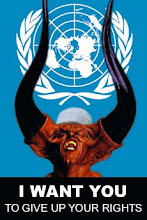 For more than 200 years, the Knights Templars were powerful beyond the scope of most kings. With absolutely legendary fighting abilities and public discretions, they may have secured the most sought after treasures in human history, according to Ian Sinclair, Grand Prior of the Scottish Knight Templars.
For more than 200 years, the Knights Templars were powerful beyond the scope of most kings. With absolutely legendary fighting abilities and public discretions, they may have secured the most sought after treasures in human history, according to Ian Sinclair, Grand Prior of the Scottish Knight Templars. On Thursday, Oct. 4, Sinclair spoke before a packed audience at the Sedona Public Library about the mysteries surrounding the Knights Templars, the Sinclair family and Rosslyn Chapel in Scotland.
The Knights Templars — founded near the beginning of the 12th century — allegedly formed to protect Christian pilgrims journeying to and from the city of Jerusalem just after the First Crusades.

When Crusaders took Jerusalem by storm in A.D. 1097, they massacred and beheaded thousands, according to Sinclair. Henry de St. Clair, one of the Scottish Crusader knights — a descendent of Catherine de St. Clair and Knights Templar founder Hugues de Payens — returned home to Scotland with stories of vast wealth buried somewhere in Jerusalem, possibly in the ruins of Herod’s Temple. Before long, French and Scottish Templars assembled and began digging for treasure.
“They were not interested in history,” Sinclair assured. “What they were after was a vast treasure … the Ark of the Covenant? the Holy Grail? Who knows?”
In A.D. 1119, Hugues de Payens and a group of primitive archaeologists gained access to a vault beneath the rubble of Herod’s Temple and found treasure, according to Sinclair, who said their presence in the vault was later confirmed when Templar artifacts were discovered during an archaeological expedition.
“Hugues de Payens was surely there,” Sinclair said, but “what did he discover? What did he find?”
The enormous wealth that allowed the Knights Templars to become deeply involved in castle building and entertaining most certainly did not come from farming, according to Sinclair.
That extraordinary wealth may have been the impetus for King Philip IV of France and Pope Clement V, also based in France, to order the execution of all French Knights Templars in late 1307.
On Friday, Oct. 13, of that year — the day forever known as Black Friday — mass executions were ordered and the response “was soon, swift and lethal,” Sinclair said. The Templars’ vast wealth, however, was never found.
There’s considerable evidence to suggest Templars were forewarned of King Philip’s plans. Twenty Templar ships left France just days before Black Friday, according to Sinclair — some bound for Portugal and others for the Western Isles.
“Many historians believe that the vast treasure most certainly headed for Rosslyn — not directly, but it most certainly headed for Roslin” — a small town south of Edinburgh, Scotland, Sinclair said.
Rosslyn Chapel, a 15th century church designed by Knights Templar William Sinclair, may be where the Holy Grail and other treasures and documents were once stored — and perhaps still are, according to Sinclair.
His ancestors began building the chapel in 1446, just a year after a fire nearly devastated nearby Roslin Castle. Several caskets of documents and other treasures were allegedly spared from the fire, and those treasures may be buried in the crypt 40 feet below Rosslyn Chapel’s foundation, Sinclair said.
The magnificently-designed chapel took approximately 40 years to complete and the Sinclairs spent massive amounts of money during the process. Its location, which is remarkably close to another church, is more than a bit suspicious, according to Sinclair.
Why build a chapel so close to a church, he asked. There’s no reason, unless ….
“Rosslyn Chapel was not built as a place of worship. It was built as a repository for secrets,” Sinclair said. Evidence that the chapel is actually a reconstruction of the Temple of Herod only fuels the mystery.
“All the pillars are laid out to a precise plan according to ancient history,” according to Sinclair, and “the ritual references carved into the stone have been created as a clue for the individual who will one day unlock the mysteries of Rosslyn.”
If there are indeed mysteries to be unlocked, unlocking them may lead to some of the most earth-shattering archaeological discoveries in history.
Sinclair is hopeful that, in due time, those mysteries will be unlocked, he said. He makes no claims as to what the Holy Grail actually is, but he believes he knows where to find it.
“The Holy Grail is down below in the vaults,” Sinclair assured. “Believe me, the Holy Grail is down below.”
For more information about the Scottish Knight Templars and Rosslyn Chapel mysteries, visit The International Order of Gnostic Templars - GnosticTemplars.org
================================================

















No comments:
Post a Comment